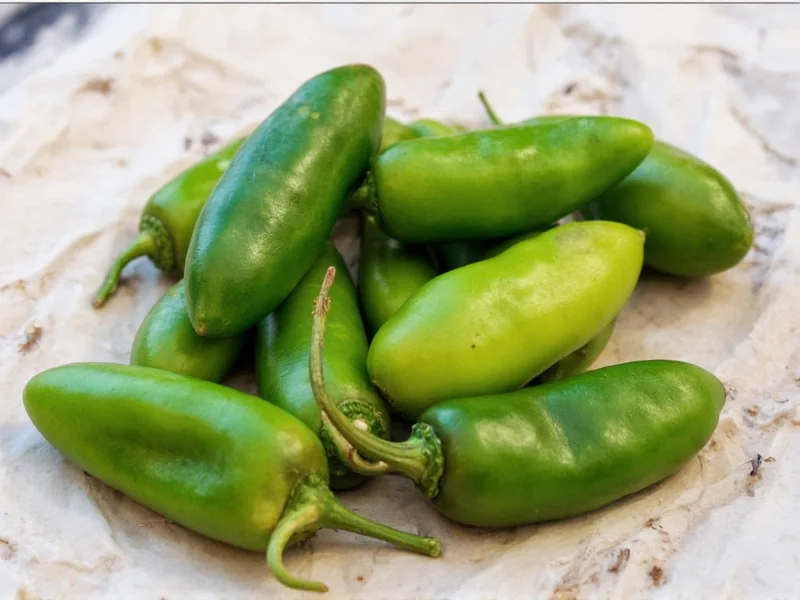When comparing these two popular chili peppers, understanding their heat levels is essential for both cooking and gardening purposes. Many home chefs and food enthusiasts wonder are jalapenos or serranos spicier when deciding which pepper to use in their recipes. The clear answer lies in scientific measurement and culinary experience.
Understanding Pepper Heat Measurement
Pepper spiciness is measured using the Scoville scale, which quantifies the concentration of capsaicin—the compound responsible for that burning sensation. Developed by pharmacist Wilbur Scoville in 1912, this scale remains the standard for comparing chili pepper heat levels. Modern testing uses high-performance liquid chromatography for more precise measurements, but results are still expressed in Scoville Heat Units.
Jalapeño Pepper Characteristics
Jalapeños are among the most widely recognized chili peppers globally, commonly found in grocery stores and used in countless Mexican and Tex-Mex dishes. These medium-sized peppers typically measure 2-3 inches long with a smooth, dark green skin that turns red when fully mature.
Their heat profile ranges from mild to moderately hot at 2,500-8,000 SHU. Several factors influence jalapeño heat levels:
- Ripeness (red jalapeños are often hotter than green ones)
- Growing conditions (stress increases capsaicin production)
- Specific variety (some cultivars are bred for milder flavor)
- Part of the pepper (seeds and membranes contain the most capsaicin)
Serrano Pepper Profile
Serrano peppers, named after the mountainous regions of Mexico (sierras), are smaller and significantly hotter than jalapeños. These 1-2 inch peppers grow upright on the plant and typically range from bright green to deep red when mature.
With a Scoville rating of 10,000-23,000 SHU, serranos deliver a cleaner, brighter heat that builds more quickly than jalapeños. Their thinner walls make them excellent for fresh salsas, pico de gallo, and hot sauces where a pronounced heat is desired without overwhelming texture.
| Pepper Type | Scoville Heat Units | Size | Flavor Profile | Common Uses |
|---|---|---|---|---|
| Jalapeño | 2,500-8,000 SHU | 2-3 inches | Grassy, vegetal, with moderate heat | Salsas, nachos, poppers, pickled peppers |
| Serrano | 10,000-23,000 SHU | 1-2 inches | Crisp, bright, with intense heat | Fresh salsas, hot sauces, guacamole, garnishes |
Factors That Affect Pepper Heat Levels
When considering which is hotter jalapeno or serrano, it's important to understand that heat levels can vary significantly within each pepper type. Several environmental and biological factors influence spiciness:
- Water stress: Peppers grown with less water often develop higher capsaicin levels
- Sun exposure: More sunlight generally increases heat production
- Soil conditions: Nutrient availability affects capsaicin concentration
- Ripeness: Fully mature red peppers are typically hotter than green ones
- Genetic variation: Different cultivars have distinct heat profiles
A jalapeño at the high end of its range (8,000 SHU) might approach the mild end of a serrano (10,000 SHU), but this overlap is uncommon. Most serranos substantially exceed even the hottest jalapeños.
Culinary Applications and Substitutions
Understanding the jalapeno vs serrano heat comparison helps cooks make informed decisions in the kitchen. While both peppers work well in many Mexican dishes, their different heat levels and textures make them suitable for specific applications.
Jalapeños work best when you need:
- Milder heat that won't overwhelm other flavors
- Peppers that can be stuffed (their larger size accommodates fillings)
- Grilled or roasted applications (thicker walls hold up better to heat)
- A more accessible spice level for those sensitive to heat
Serranos shine when you want:
- Intense heat without adding significant bulk to dishes
- Bright, clean pepper flavor in fresh salsas
- A quicker heat build-up in sauces and condiments
- Authentic flavor in traditional Mexican dishes like pico de gallo
If substituting one for the other, remember that you'll need approximately half as many serranos to achieve similar heat levels to jalapeños. For those sensitive to spice, start with even less serrano and adjust to taste.
Safety Tips for Handling Hot Peppers
Working with serranos requires more caution than jalapeños due to their higher capsaicin content. Follow these safety guidelines:
- Wear gloves when handling, especially when seeding or chopping
- Avoid touching your face, particularly eyes, while working with peppers
- Wash hands thoroughly with soap after handling, even if you wore gloves
- Use separate cutting boards for hot peppers to prevent cross-contamination
- If you experience burning, dairy products (milk, yogurt) help neutralize capsaicin better than water
Remember that cooking doesn't eliminate capsaicin—it simply distributes it throughout your dish. The heat remains stable through the cooking process, so adjust quantities carefully before adding peppers to hot liquids.
Final Thoughts on Jalapeño vs Serrano Heat
When answering the question are jalapenos or serranos spicier, the evidence is clear: serranos consistently deliver more heat. However, both peppers have valuable places in the kitchen depending on your desired spice level and culinary application. Understanding their heat profiles allows you to make informed choices that enhance your dishes without overwhelming them with unnecessary heat.











 浙公网安备
33010002000092号
浙公网安备
33010002000092号 浙B2-20120091-4
浙B2-20120091-4